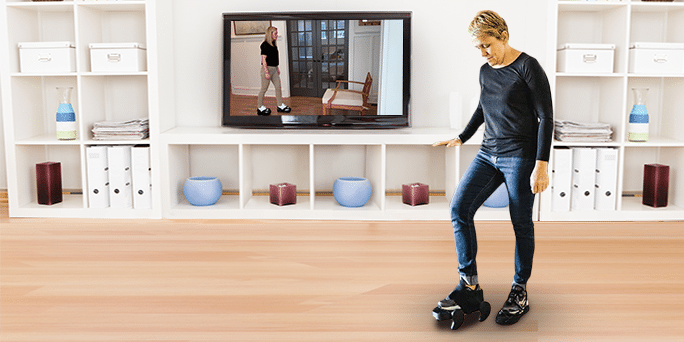Stroke is a leading cause of death and disability worldwide. One of the most common impairments caused by stroke is hemiparesis, which is characterized by weakness on one side of the body. Hemiparesis can affect walking, and people with hemiparesis often have difficulty taking long, even steps.
A new device called the Gait Enhancing Mobile Shoe (GEMS), or the Moterum iStride Device™, is designed to help people with hemiparesis improve their walking. The device is a passive, portable, wearable device that moves the nonparetic foot backward while the individual walks over ground. The backward motion of the shoe is generated passively by redirecting the wearer’s downward force during stance phase. The motion is generated by the wearer’s force, which allows easier adaptation to the motion, but this also causes the speed to vary slightly from person to person.
The authors of the paper hypothesize that the technology helps with gait relearning in several ways. First, the backward motion exaggerates step length asymmetry such that some of the resulting spatiotemporal aspects of gait will be more symmetric once the shoe is taken off. This can be thought of as a version of error augmentation where the asymmetric step length is exaggerated. Secondly, the motion of the shoe encourages the use of the paretic side by making it harder to walk on the nonparetic side. Thirdly, it is untethered and portable, so it enables rehabilitation in a variety of locations. Making rehabilitation available in more locations should improve the context-dependent learning so patients are relearning gait in the same places that they will generally be walking. This context should also help generalize the knowledge to real-world scenarios instead of just the laboratory setting. Fourthly, the device could enable patients to work on their gait in their own time and at their own pace.
The authors conducted a pilot study with 3 healthy subjects. The subjects walked on the shoes for 20 minutes during which one shoe generated a backward motion and the other shoe generated a forward motion. The results showed that wearing the device did cause subjects to modify coordination between the legs and these changes persisted when subjects returned to normal over-ground walking. The largest effects were observed in measures of temporal coordination (e.g., duration of double-support). These results suggest that the Moterum iStride Device™ is capable of altering overground walking coordination in healthy controls and could potentially be used to correct gait asymmetries post-stroke.
This paper is a valuable contribution to the field of stroke rehabilitation. The device described in the paper has the potential to help a large number of people who have had a stroke. The authors have provided a strong rationale for the design of the device and have presented promising results from a pilot study. Further research is needed to confirm the efficacy of the device in a larger study, but the results of this paper suggest that the device has the potential to be a valuable tool for stroke rehabilitation.
To read the full study, click here
